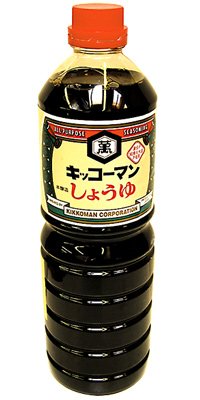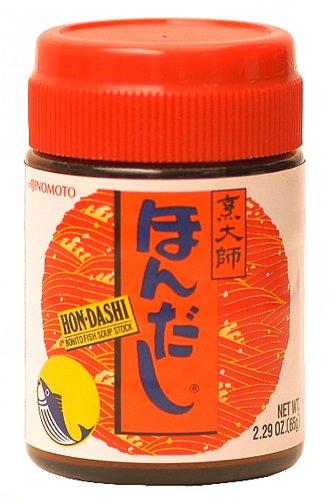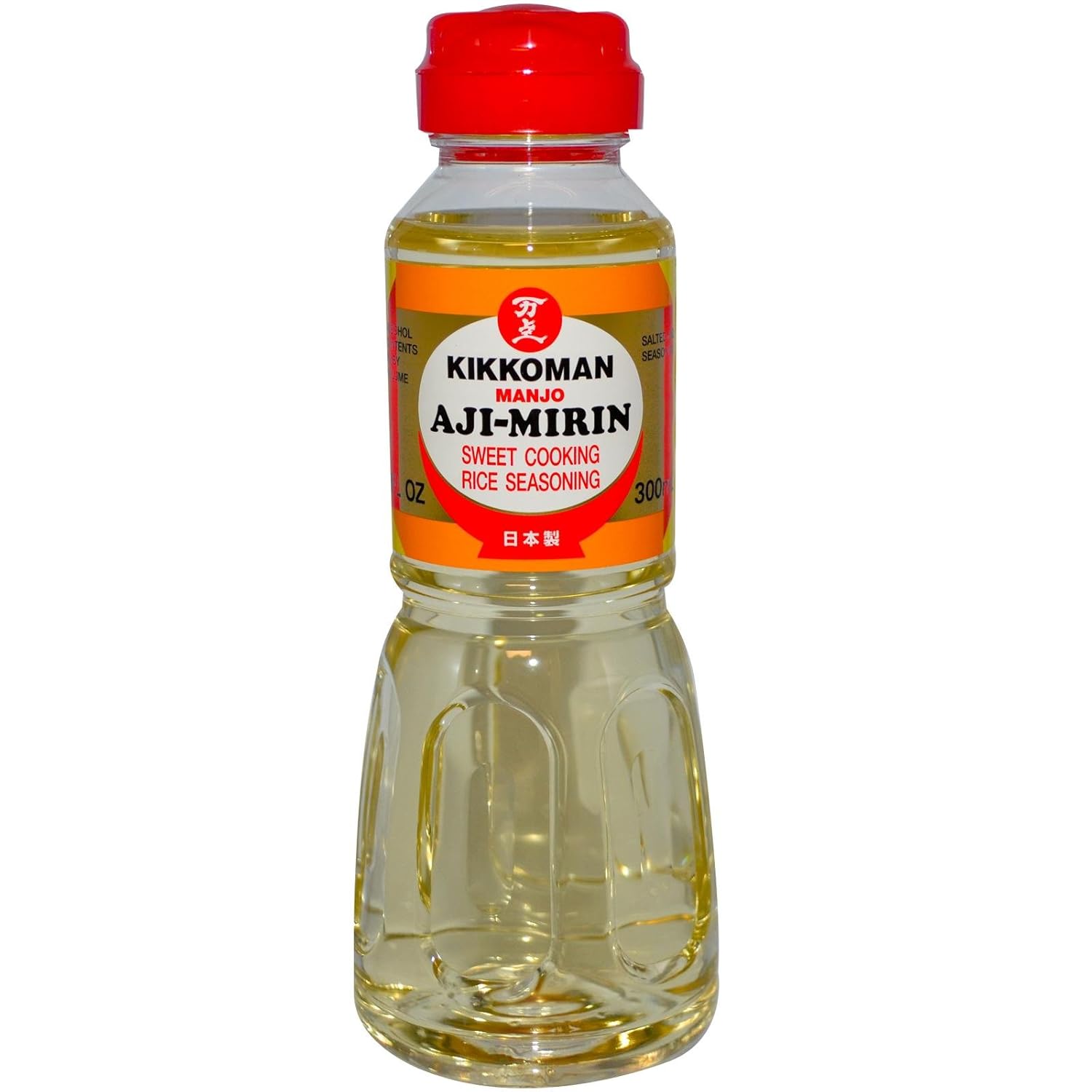Before I share any more of those, I thought it would be a good idea to step back and talk about a few of the backbones of Japanese cooking. The majority of the recipes I’ve seen use some combination of these 4 ingredients, so they are great to have on hand.
Soy Sauce (Shoyu) ~

This one I’m sure you are familiar with, and you probably already have a bottle at home! Soy sauce is made from fermented soy beans and grains. There are dark versions that are more concentrated, low sodium and other variations, but I think you are pretty safe with any standard bottle found at your grocery store. We like to use La Choy for dipping or sprinkled on rice, and I also have a giant bottle from the Asian market more similar to the brewed Kikkoman brand for Japanese recipes.
Dashi ~

This broth is used as the base of most soups and noodles, and also used to add flavor in many recipes in the same way we might use chicken broth. It is made from kombu seaweed, which gives it a rich, meaty flavor (umami), and flakes of dried bonito fish. (There are vegetarian versions made with only kombu)
I have the bottle pictured above, which is filled with bouillon granules. From what I’ve read, pouches similar to tea bags are more commonly used in Japan, but they are harder for me to find at the Asian market. Or you can buy the kombu and katsuobushi flakes at an Asian market and brew your own! In a pinch, if your recipe only calls for a small amount, you could substitute with chicken broth.
Sake ~

Sake is a lightly flavored alcohol made from fermented rice and is another ingredient that is easy to find. Although I often have trouble locating it at the Asian market, you can find it at most package stores. I did omit this one while pregnant, but need to pick up a new bottle for the authentic taste it gives our recipes.
Mirin ~

Mirin is a sweet wine made from rice which adds a nice glaze to food along with its sweet flavor. I have the bottle pictured above, which I believe is ‘fake’ mirin (“Aji-mirin” means “mirin taste”), but it is a common and cheaper alternative. If a recipe only calls for a small amount, you can substitute with a little sugar mixed into white wine, sherry, or sake.
I hope Japanese cooking seems a little less daunting now!

No comments:
Post a Comment